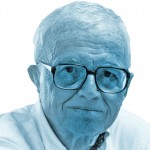Look in the glove compartment of my car and you won’t see a single glove. But you will find maps—tattered maps of places I once visited. I can look at road maps of the United States forever, reminding myself of strangers met along the way, of small roads with small towns of unexpected beauty, of farms and fairgrounds and Civil War battlefields, of college towns where I once taught, of the never-far-from-my-thoughts Mississippi River, the majestic highway that bisects the nation. I like to situate myself in the larger universe of continents and rivers and oceans that I was born into.
But with the advent of global positioning I’ve begun to wonder if I belong to a vanishing tribe. Today’s drivers don’t seem to care where they actually are; they only want to know where they are going. Cradled by the soothing voice of Kathy or Sandra telling them to turn right at the next intersection and left after the bank, they are absolved from looking at the contours of the land, the horses in the field, the buildings and stores along Main Street that give every town its identity.
The other day I happened to notice that the huge map of the New York City subway system, a comforting friend affixed to the wall of every subway station, has been supplemented by a small linear strip that only shows the successive stops along that particular subway line. Gone, for many riders, is the knowledge that they are traveling on one of the world’s great railway networks—227 miles of tracks that run over two big bridges and under two rivers, connecting four of the city’s five boroughs at their remotest extreme, from Woodlawn cemetery in the Bronx to the ocean-side cottages in Far Rockaway, often emerging from a tunnel to an elevated stretch that offers a breathtaking view of the towers of Manhattan. Such a city is not reducible to one short, straight line.
When our son John was a small boy I used to take him on elevated subway rides to no particular destination. We would stand in the front car, enjoying the interlaced switches ahead of us and the ethnic neighborhoods below; at one stop four Ecuadorian musicians got on and filled the car with song. Our pleasure was in the journey, not the arrival, because we never had a place to arrive.
A generation later I was once left in charge of my grandson Mark, who was then about 10. He expected me to take him, as instructed by his mother, to the Central Park Zoo and F.A.O. Schwarz. Instead we took the Lexington Avenue subway to the City Hall stop. “The city looks different down here,” Mark said when we emerged, referring to the smaller scale of the buildings and the helter-skelter pattern of the streets. I explained that this was the oldest part of the city. We walked across the Brooklyn Bridge, stopping to look down on the narrowing tip of Manhattan and the once-busy docks with names like Peck Slip. We saw–as if on an aerial map–how the East River joins the Hudson River near the Statue of Liberty and flows down a channel to the Atlantic Ocean and the whole wide world. On the walkway of the bridge we actually touched its mighty cables where they were anchored in a giant concrete slab. Our old and young fingers made contact with one of the wonders of 19th-century industrial America. Afterward we walked through Chinatown, just north of the bridge. Mark had no idea that such an exotic community existed just a short subway ride from of the tidy uptown neighborhoods he was familiar with.
On our expedition Mark and I were fully alive in our surroundings. Not so today’s urban walkers. The new hand-held technologies have sired a breed of elsewhere-dwellers, incurious about the here and now, texting or chatting on a cell phone to someone in Dubai. They have no idea where Dubai is. They could look it up on a map. But they won’t.


